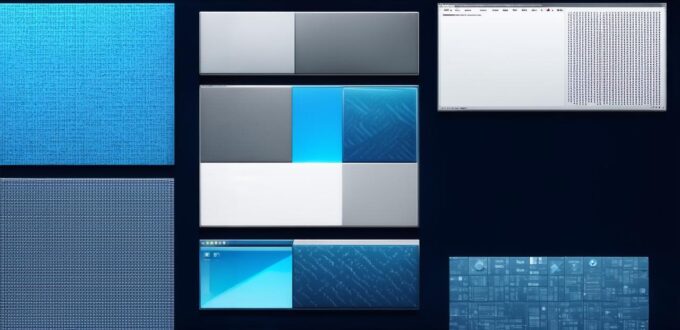As an aspiring software developer, it’s essential to understand the various types of software that exist and how they differ from each other. In this article, we will explore four common kinds of software and their unique features, benefits, and use cases.
1. Operating Systems
An operating system (OS) is a type of software that manages computer hardware resources and provides common services for computer programs to run on. It acts as an intermediary between the user and the physical hardware of a computer, allowing users to interact with their devices and perform tasks efficiently. Examples of modern operating systems include Windows, macOS, Linux, and iOS.
Operating systems have evolved significantly over time, with newer versions offering more advanced features such as improved security, enhanced multitasking capabilities, and better support for cloud-based technologies. In addition, operating systems can also impact the performance of software applications, so it’s essential to choose an OS that is compatible with your specific needs and requirements.
2. Productivity Software
Productivity software refers to a range of computer programs designed to help users create, manage, and share documents, spreadsheets, presentations, and other types of files. Examples of productivity software include Microsoft Office (Word, Excel, PowerPoint), Google Docs (Docs, Sheets, Slides), and Adobe Creative Suite (Photoshop, Illustrator, InDesign).
Productivity software is crucial for businesses and individuals alike, as it enables them to work more efficiently and effectively. With the ability to collaborate on projects in real-time, users can save time and streamline their workflows, leading to increased productivity and better outcomes. Moreover, productivity software can also help users stay organized and keep track of important information, making it easier to find what they need when they need it.
3. Game Software
Game software refers to a type of software specifically designed for gaming and entertainment purposes. This includes everything from simple arcade-style games to complex, open-world adventures and multiplayer role-playing games (RPGs). Examples of popular game software include Fortnite, Grand Theft Auto V, and Minecraft.
Game software is a highly specialized type of software that requires unique development skills and tools. Developers must consider factors such as graphics, sound effects, user interface design, and game mechanics when creating engaging and immersive experiences for players. In addition, game software often relies on cloud-based technologies to ensure smooth gameplay and minimize lag.
4. Educational Software
Educational software refers to a range of computer programs designed to help students learn and develop new skills in various subjects and disciplines. This includes everything from interactive textbooks and digital simulations to language learning apps and educational games. Examples of popular educational software include Khan Academy, Duolingo, and Scratch.
Educational software has become increasingly important in recent years as it allows students to learn at their own pace and on their own schedule. With access to a wide range of resources and interactive tools, students can engage with the material in a more meaningful way, leading to better understanding and retention of information. Moreover, educational software can also help teachers create more engaging lesson plans and provide personalized feedback and support to individual students.
Comparing and Contrasting Software Types

While each type of software has its unique features and benefits, they all share some common characteristics. For example, all types of software require a certain level of computing power and memory to run effectively, as well as regular updates and maintenance to ensure optimal performance. In addition, all types of software can be accessed through a computer or other device with an internet connection, making them highly versatile and convenient for users.
However, there are also significant differences between these software types. For example, operating systems are typically more complex and require more resources to install and run than productivity software or game software. In addition, educational software is often designed specifically for a particular age group or subject area, making it less versatile than other types of software but highly specialized and effective in its intended purpose.
